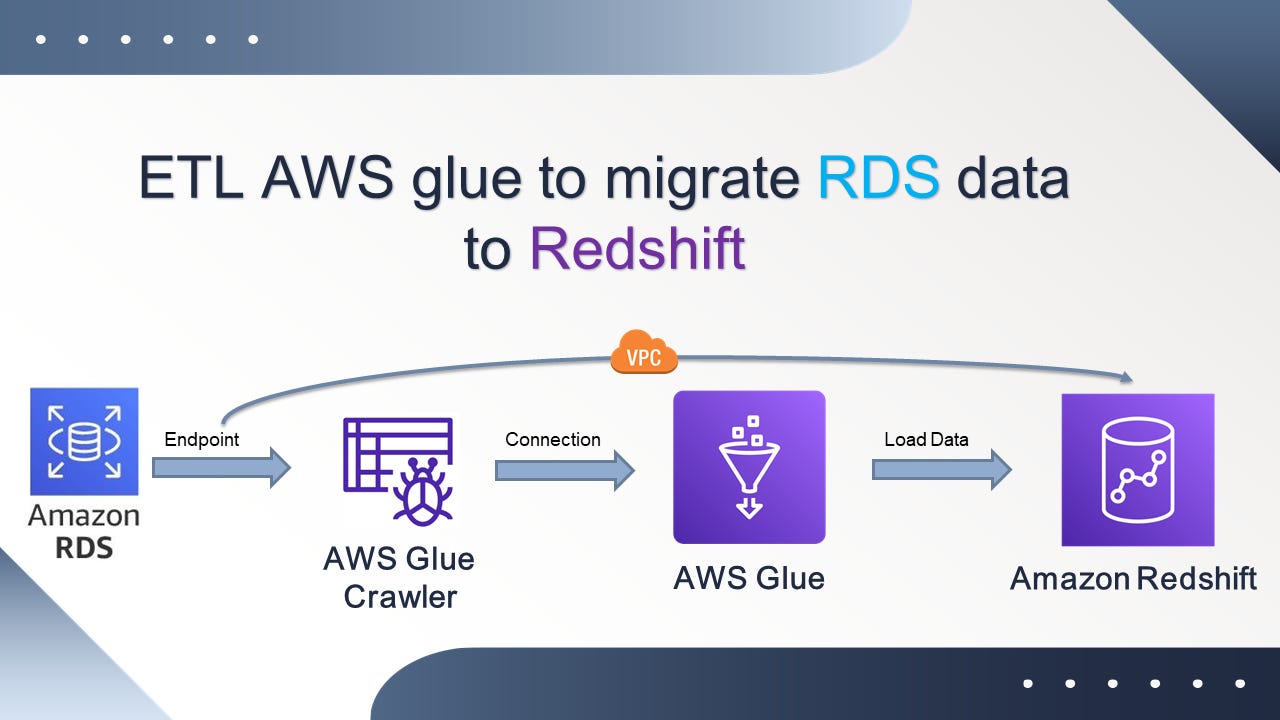ETL AWS glue to migrate RDS data to Redshift
Here is a step-by-step demonstration of an ETL process using AWS Glue, where data is loaded into Amazon Redshift from AWS RDS (Microsoft SQL Server):
Step 1: Create a Database in Amazon RDS
Select the engine: Microsoft SQL Server.
Important configuration: Set Public Access to "Yes".
Step 2: Create a Cluster in Amazon Redshift
Create a Cluster in Redshift: Follow the standard configuration process.
Step 3: Configure VPC
Create an endpoint: Select "AWS services" and choose the S3 service with gateway type.
Configure Security Groups: Add new inbound rules to allow all types of traffic.
Modify Route Tables: Edit the routes to add the endpoint.
Step 4: Access Microsoft SQL Server
Use the endpoint and port of Amazon RDS to connect.
Create the database and necessary tables.
Insert data into the tables.
Step 5: Create a Table in Redshift
Create a Table in Redshift: Ensure it has the same schema as the RDS database.
Step 6: Configure AWS Glue Connections
For RDS: Select Microsoft SQL Server.
For Redshift: Select Redshift.
Test both connections to ensure they are properly configured.
Step 7: Create the Database in AWS Glue
Create a Database in AWS Glue: This will be used to store metadata for RDS.
Step 8: Create and Run the Crawler
Select JDBC as the data source.
Choose the RDS connection.
Define the path where the tables are located.
Run the Crawler: This will create a temporary table in Glue with the data from RDS.
Step 9: Create and Run the ETL Job
Select Microsoft SQL Server as the source.
Select Redshift as the target.
Configure and Run the ETL Job: Ensure all column mappings are correct.
Monitor the Job: Check for any errors during execution.
Monitoring and Verification
Monitor the ETL Job in AWS Glue: Ensure the job completes without errors.
Verify Data in Redshift: Ensure the data has been correctly transferred from RDS to Redshift.
By following these steps, you can establish an efficient ETL process using AWS Glue to transfer data from an RDS database (Microsoft SQL Server) to Amazon Redshift.


